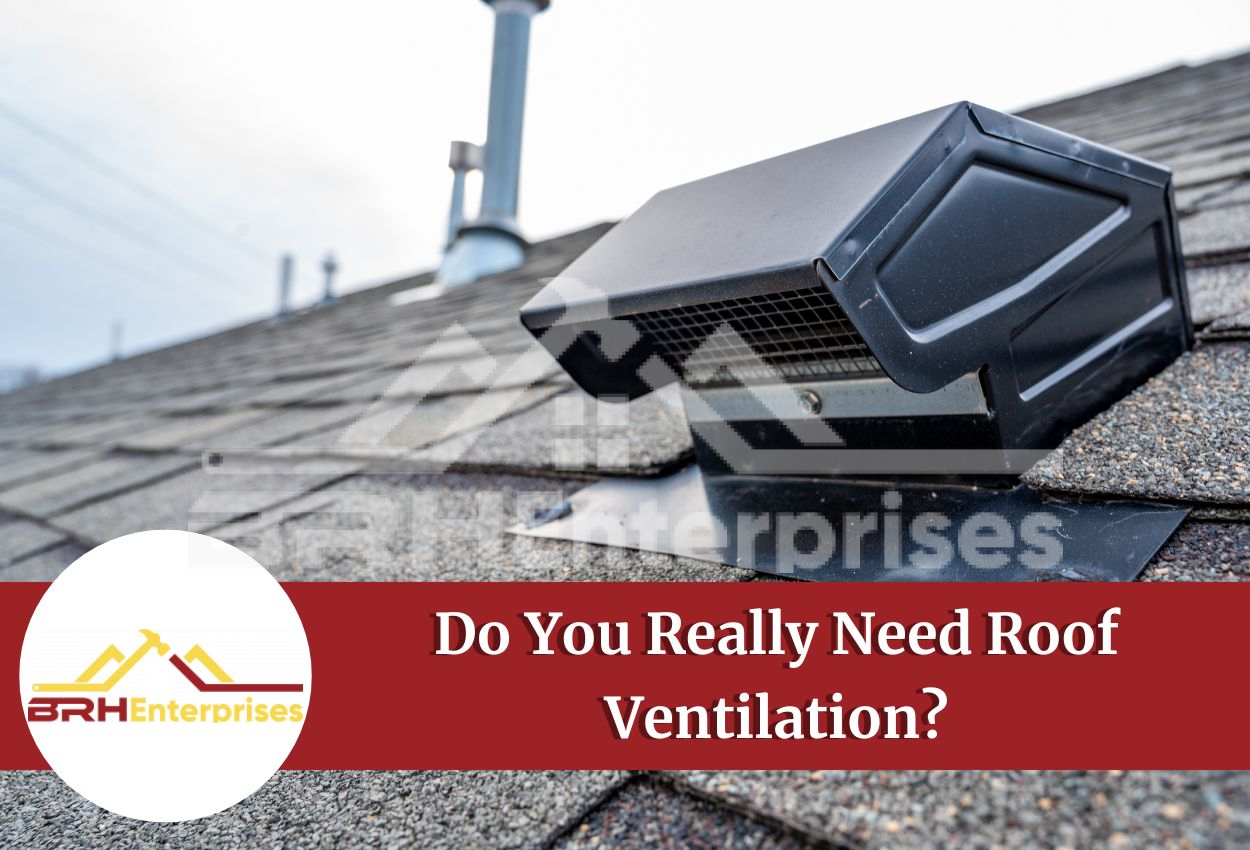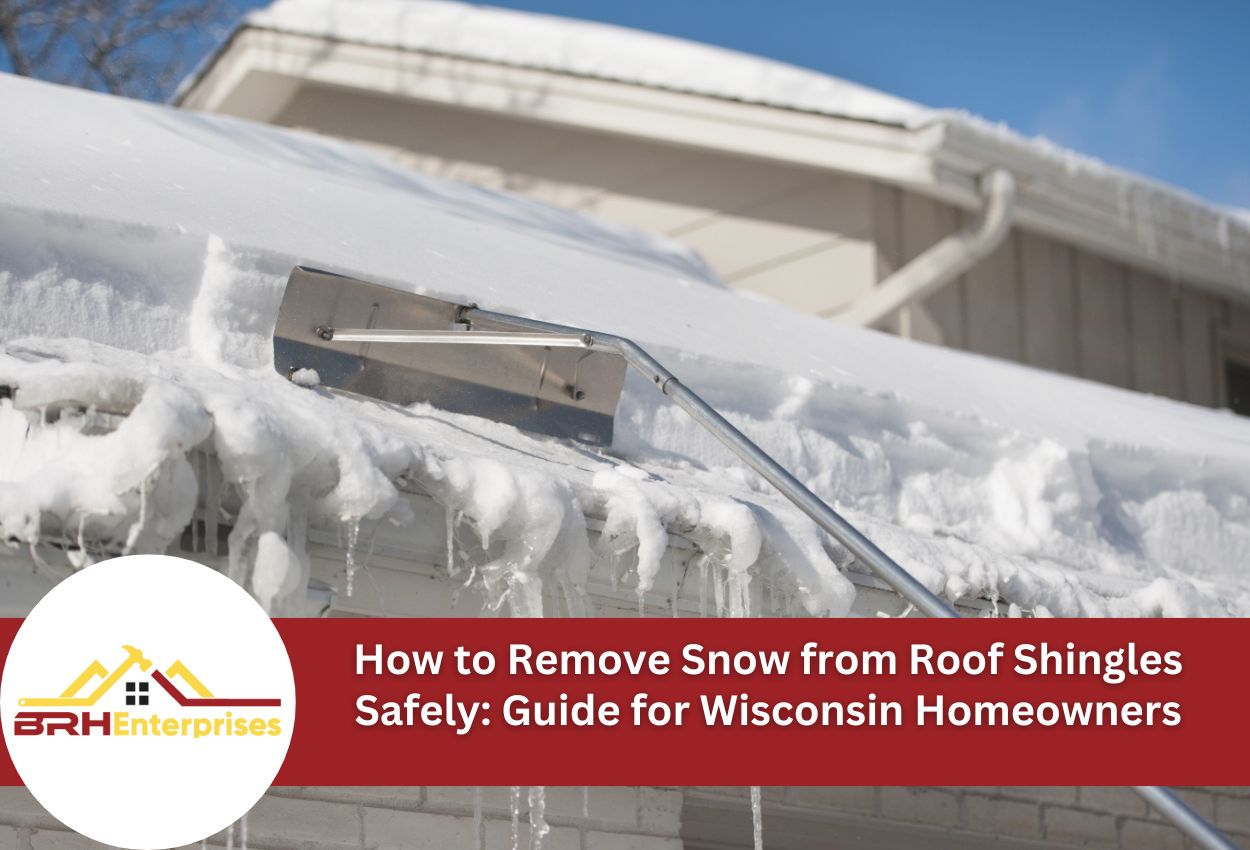7 Common Roof Ventilation Mistakes to Avoid & The 4 Best Roof Vents For Your Home

Just like you open the windows in your home to allow fresh air in, your attic needs proper ventilation to prevent issues like moisture buildup, mold growth, and structural damage. However, some roof ventilation mistakes can cause major problems in your home or commercial building. To keep your roof vents functional, you need to avoid some common mistakes.
This blog post will make you aware of some roof ventilation mistakes and give you ways to avoid them. Also, we have listed the four best roof vents for your home to keep it protected and free from damage. Read this blog post until the end to make the right decision and avoid any mishaps.
Why Proper Roof Ventilation Is Important For Your Home
1. Temperature Regulation
One of the primary purposes of proper roof ventilation is temperature regulation inside your home. During the hot summer, your attic can collect heat, making your home like an oven.
On the other hand, in the winter, a poorly ventilated attic can lead to ice dams, which can damage your roof. Ice dams form when the ice on your roof melts due to hot and warm air escaping from the attic and refreezing at the eaves.
2. Moisture Control
Moisture is a silent killer of your home’s structural integrity. When warm, moist air from your living space rises into the attic and encounters a cold roof deck, condensation occurs.
Since mold and mildew develop on wet surfaces and in moist environments, over time, this moisture buildup can lead to mold growth in the attic. But, if you have installed working ventilation on your roof, this will allow moisture to escape, protecting your roof from potential damage.
3. Extending Roof Lifespan
Since your roof is a substantial investment, you want it to last as long as possible. But, bear in mind, this isn’t possible with poor ventilation. Poor roof ventilation can significantly reduce the lifespan of your roof. The trapped heat and moisture can accelerate the deterioration of roofing materials, leading to premature wear, tear, and cracks.
4. Energy Efficiency
Roof ventilation plays a crucial role in increasing the energy efficiency of your home, especially the roof ridge vent. Roof vents can also significantly reduce your energy costs. When your attic is properly ventilated, it helps to maintain a stable temperature in your home, reducing the strain on your heating and cooling systems.
5. Ice Dam Prevention
Ice dams, as you know, are a common winter occurrence in regions with cold climates. These ice dams add significant weight to your roofing structure and can cause excessive damage to your roof and gutters.
6. Improved Indoor Air Quality
Believe it or not, roof ventilation can also impact your indoor air quality. When moisture is allowed to accumulate in your attic, it sets the stage for mold and moss growth. Since mold spores travel through the air, they can infiltrate your living spaces, posing health risks to your family.
Along with the roof ventilation, attic insulation is a crucial part of your roofing system as well. For more information, read our blog post: All You Need To Know About Roof Insulation And The Top Products In Just 5 Minutes
Roof Ventilation Mistakes You Should Avoid
Here are some common mistakes you should avoid when installing roof vents, and while maintaining them. If neglected and unaddressed, these problems may result in extensive repairs that will ultimately cost you more over time.
1. Neglecting Attic Ventilation
Proper attic ventilation is the foundation of a healthy roof. Many homeowners overlook the attic when it comes to ventilation, thinking it’s not important. However, inadequate attic ventilation can lead to a range of problems, including ice dams in winter and heat retention in summer.
2. Blocking Roof Vents
One of the most common mistakes is blocking the roof vents unintentionally. This can happen when homeowners install insulation or storage in the attic without considering the vents. Blocked vents can cause hot air to become trapped in the attic, leading to higher energy bills and potential roof damage.
3. Using The Wrong Type of Ventilation
Choosing the right type of roof ventilation is essential. Some homeowners opt for box vents when ridge vents would be more effective, or vice versa. Understanding the differences and benefits of each type can make a significant difference in your home’s ventilation. Using the wrong type of roof vents also includes:
Mixing Different Ventilation Types: To maintain a balanced temperature and airflow inside your home, install both intake and exhaust vents. However, incorrectly mixing different types can disrupt airflow and create issues.
Using Passive Vents Only: Passive vents, such as ridge vents and soffit vents, are excellent, but they may not provide sufficient ventilation on their own. Consider adding electric powered vents if necessary.
4. Insufficient Ventilation
Another mistake is having insufficient ventilation. When there are not enough roof vents, or they are too small for your attic space, it can lead to a number of problems. Some of them may include:
1. Mold and Mildew Growth: Excess moisture can create a breeding ground for mold and mildew, which can be harmful to your health and compromise your home’s structural integrity.
2. Reduced Energy Efficiency: Poor ventilation can lead to higher energy bills as your HVAC system works harder to maintain a comfortable temperature.
3. Roof Damage: Heat buildup can cause shingles to warp and deteriorate prematurely, reducing the lifespan of your roof.
5. Neglecting Roof Inspections
Regular roof inspections are crucial to identifying ventilation problems early. Many homeowners only notice an issue when it becomes severe, resulting in expensive repairs. Regular inspections can catch problems before they escalate.
6. Covering Soffit Vents with Insulation
Soffit vents are located under the eaves of your roof and are essential for allowing fresh air into the attic. Covering them with insulation, even by accident, can hinder proper airflow.
7. Improper Ventilation Calculations
Calculating the right amount of ventilation for your attic can be tricky. Too much can be just as problematic as too little. Therefore, it’s crucial to reach the right balance to ensure your roof’s health.
How Much Ventilation Does Your Attic Need?
The 1:150 Ratio:
A common rule of thumb is to provide at least 1 square foot of attic ventilation for every 150 square feet of attic space. This ratio may vary depending on your local building codes and climate conditions. Despite this general calculation, how much ventilation your attic needs depends on various factors. You are always recommended to consult a roofing professional to determine your roof’s ventilation needs.
1. Attic Size
The size of your attic is a fundamental factor in determining its ventilation needs. A larger attic space will require more ventilation to ensure proper air circulation. Measure the square footage of your attic to get a rough estimate of your ventilation requirements.
2. Roof Pitch
The pitch or slope of your roof also influences ventilation needs. Steeper roofs tend to create better natural airflow, while flat roofs may need additional ventilation to compensate for reduced airflow.
3. Local Climate
The climate in your region also plays an important role in determining the ventilation needs of your home. In hot and humid climates, more ventilation is often required to prevent heat and moisture buildup. While in cold climates, ventilation should be adequate to prevent ice dams.
4. Type of Ventilation
The type of ventilation you choose also determines the quantity needed. Different vent styles provide varying levels of airflow and unique advantages. Ridge vents, soffit vents, gable vents, and box vents all have specific capabilities for venting your attic. Make sure you balance the intake and exhaust vents in your attic.
Also read: 9 Best Types Of Roof Vents & Their Top Products
5. Building Codes
Also, local building codes and regulations dictate the minimum attic ventilation requirements. These codes exist to ensure your home’s safety and compliance with the regional climate. You must familiarize yourself with these codes before installing roof vents in your attic.
6. Roofing Material
The type of roofing material you have installed on your home impacts ventilation needs. Some roofing materials, like asphalt shingles, are known for trapping heat. Ensure that your ventilation system accommodates the specific characteristics of your roofing material.
7. Desired Comfort Level
Your personal comfort preferences also come into play. If you want your home to remain cooler during the hot summer or warmer in the winter, you may choose to increase ventilation beyond the minimum requirements.
Two Main Types Of Roof Vents
Exhaust and intake vents are the two ventilation methods incorporated on roofs to maintain the desired temperature and ventilation inside the building.
1. Exhaust Vents
Exhaust vents are designed to allow hot and moist air to escape from the attic space. This is vital for preventing heat buildup, moisture accumulation, and the potential damage they can cause to the roof and the structure of the home.
Common types of exhaust vents include ridge vents, box vents, also known as static vents, and gable vents.
2. Intake Vents
Intake vents, as the name suggests, bring fresh air into the attic space. They complement exhaust vents by providing a continuous source of cooler, outside air.
Common types of intake vents include soffit vents and electric powered vents.
Consider The Best Roof Vents For Your Home
1. Ridge Vents
Ridge vents are considered one of the most effective and aesthetically pleasing options. They are installed along the roof’s ridge, allowing hot air to escape naturally. As warm air rises in the attic, it seamlessly leaves through the ridge vent.
It works in tandem with soffit vents, creating a continuous flow of air inside the attic. Roof ridge vents are also known for increasing the energy efficiency of an attic. This method is excellent for maintaining an even temperature and preventing moisture buildup.
2. Soffit Vents
Installed along the eaves of the roof, soffit vents allow fresh air to enter the attic. Combined with exhaust vents, like ridge or box vents, they create a balanced airflow system. Soffit ventilation is a vital component of any effective roof ventilation system, ensuring that there is a consistent intake of air.
3. Gable Vents
Gable vents are typically installed at the gable ends of the roof. They provide both ventilation and an architectural element to your home’s design. While they’re effective on their own, gable vents are most useful in combination with other ventilation methods to ensure complete air circulation.
4. Box Vents
Box vents, also known as static vents or roof louvers, are affordable and straightforward roof ventilation options. They are typically installed near the top of the roof, allowing hot air to escape. While box vents are easy to install, they may not provide as much airflow as ridge vents.
Hire The Best Roofers In Wisconsin For All Your Roofing Needs
Whether you are considering a new roof installation or a complete roof replacement in Wisconsin, contact BRH Enterprises, your local roofing company. The roofers at our company are proficient at handling all roofing services, including roof replacement, repair, metal and shingle roof installation, and roof storm damage. Contact us today at (920) 249-4228 to consult with one of our professional roofers.

Bryce, Master Roofer
Protect Your Home with Expert Roofing
Don’t wait for leaks or storm damage to cause costly repairs. Our experienced roofing team provides fast, reliable service, high-quality materials, and lasting results. Ensure your home stays safe, secure, and looking great—contact us today for a free estimate.




